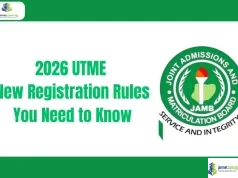Unlock the full potential of your notes with the Cornell Method. This A-Z guide shows Lazy students how to use this powerful system to organize information, actively engage with material, and ace their exams with confidence like Elite Students


In the quest for academic excellence, effective note-taking is one of the most powerful tools a student can wield. While many students scribble notes aimlessly, the Cornell Method provides a structured, systematic approach that transforms passive note-taking into an active learning process.

Join our Telegram Channel for Instant Scholarship Updates
Developed by Cornell University Professor Walter Pauk in the 1950s. Unlike the Pomodoro Technique, this method is designed to help you organize information, actively review your notes, and, most importantly, improve your recall for exams. Before you start, it is a good idea to consider whether studying abroad is a good fit for you and to have a good sense of your goals.
This guide will take you from A to Z on how to master the Cornell Method and use it to pass any exam.
The ABC of The Cornell Method
A is for Active Note-Taking
The Cornell Method is not just about writing things down; it is about actively processing and engaging with the information. Instead of transcribing a lecture verbatim, you are forced to listen, synthesize, and summarize the key ideas in your own words. This initial engagement is the first step toward better retention and understanding.
B is for the Beautiful Layout
The layout is the most recognizable feature of the Cornell Method. It divides a single page into three distinct sections:
- The Main Note-Taking Area: This is the largest section, on the right side of the page. This is where you write your primary notes from a lecture, a textbook, or a study session.
- The Cue Column: This narrower column on the left is the “magic” part of the method. You will use it to create cues, keywords, questions, or symbols that summarize the notes in the main section.
- The Summary Section: This space at the bottom of the page is reserved for a concise summary of the entire page’s content.
C is for Concise Summaries
After taking your notes, you create a short, two-or-three-sentence summary at the bottom of the page. This step is critical because it forces you to synthesize the main ideas into a coherent whole. This process helps your brain organize and retain the information more effectively than simply reading it.
The Step-by-Step Process: The “How-To” of Cornell Note-Taking
- Preparation: Before a lecture or study session, set up your page. Draw a horizontal line a few inches from the bottom of the page and a vertical line about 2.5 inches from the left margin. You can do this on a computer or with a physical notebook.
- During the Lecture (The Main Note-Taking Area): Take notes as you normally would, but try to use phrases and abbreviations to keep them concise. Focus on capturing the main ideas, facts, and key concepts. Do not worry about the other columns yet.
- After the Lecture (The Cue Column): As soon as possible after the class, review your notes and fill in the cue column. For each main point in the notes, write a keyword, a short phrase, or a question in the cue column that triggers your memory of that point.
- After the Lecture (The Summary Section): Write a one- or two-sentence summary of the entire page. This forces you to identify the core message and purpose of your notes.
- Review (The Recite & Reflect Phase): Cover up the main notes area and use only the cues on the left to recall the information. Recite the notes out loud. Check your memory against your notes. This active recall process is a proven way to strengthen memory.
Why the Cornell Method Helps Lazy Students Pass Exams
The Cornell Method is not just a way to take notes; it is a complete study system. Here is how each part of the process directly contributes to exam success:
- It Forces Active Learning: The act of synthesizing and summarizing the material for the cue column and summary section prevents you from being a passive observer. This active engagement creates stronger neural pathways for memory.
- It Makes Review Incredibly Efficient: With a single glance, you can use the cues in the left column to test your knowledge. The summary at the bottom allows you to quickly recall the main ideas of an entire page without rereading everything. This makes last-minute cramming more effective and less stressful.
- It Encourages Higher-Order Thinking: Writing questions in the cue column encourages you to think critically about the material and anticipate what might be on an exam. It shifts your mindset from simply recording information to analyzing and understanding it.
- It Identifies Gaps in Your Knowledge: If you cannot easily come up with a cue for a section of your notes or write a coherent summary, it is a clear signal that you do not fully understand that concept. You can then address these gaps by asking a professor or doing additional research. Understanding what it takes to get into certain programs is also important, as is knowing how to get a post-graduation work permit. If you are applying for scholarships, you should also learn how to ask for a recommendation letter, and read up on the qualities of scholarship winners.
Tips for Success with the Cornell Method
- Use Symbols and Abbreviations: Use symbols like stars or arrows in the cue column to highlight key information or topics that your professor emphasized.
- Leave Space: Do not be afraid to leave blank lines in your notes so you can fill in additional details later if needed.
- Color-Coding: Use different colored pens or highlighters to categorize information, such as definitions, important names, or dates.
- Practice, Practice, Practice: Like any skill, the more you practice the Cornell Method, the more natural and effective it will become. Start by using it for one class, and then expand to others as you get comfortable. If you are applying for scholarships, make sure to read up on how to write an essay that wins and how to explain a low GPA in your personal statement. It is also a good idea to research things like the difference between GKS Embassy and University Track when applying.
By using the Cornell Method, you are essentially creating your own personal study guide as you take notes. This disciplined approach to note-taking will not only help you organize your thoughts but also provide you with a powerful tool for review, allowing you to walk into any exam with confidence.
Frequently Asked Questions (FAQs)
Can I use the Cornell Method with digital notes? Yes, many note-taking apps and software have templates or features that allow you to replicate the Cornell layout.
What if I do not have enough time to create the cues and summary? It is better to do a quick review than no review at all. Even a few minutes of summarizing a page will make a difference in your retention.
Is this method suitable for all subjects? The Cornell Method works well for most subjects, especially those that are lecture-heavy. For math or science, you can adapt the cue column for formulas or problem-solving steps.
How long after a lecture should I review my notes? Reviewing your notes within 24 hours is most effective. This allows you to consolidate new information before you forget it.
How can this method help with essay writing? The structured layout helps you see the main themes and subtopics of a lecture or reading. This makes it easier to outline an essay and find supporting evidence. For more help, you can check out this guide on how to write a “why I deserve this scholarship” essay and this guide on how to write a winning Chevening scholarship essay.
Can I use this for reading textbooks? Yes, you can use the main notes area to write down key points from a chapter and the cue column for questions or keywords.
What if my professor talks too fast? Focus on capturing the main ideas rather than every single word. You can fill in the details later with a friend or by reviewing the textbook.
Does this replace other study methods like flashcards? The Cornell Method is a great complement to other methods. The cues in the left column can easily be turned into flashcards for spaced repetition.
What is the best way to prepare for a major exam with this method? Use your summaries to create a “master summary” of all your notes. Then, use the cues from all your pages to create a practice test for yourself.
Do I need to check if I am required to take the GRE to study abroad? Yes, always check the requirements of the schools you are applying to. You can read more about whether you require the GRE for your study abroad applications.













